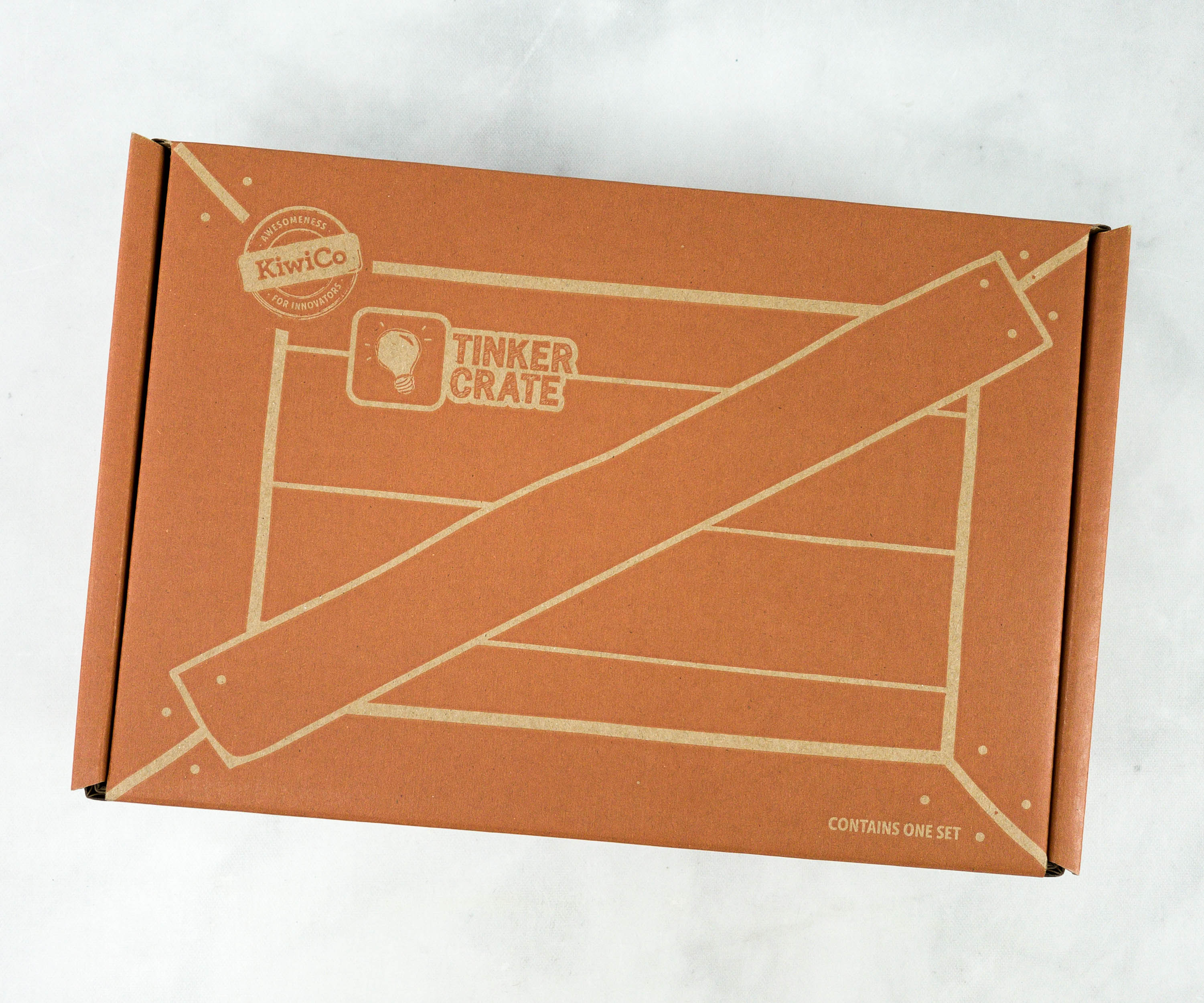
Tinker Crate is a subscription box that inspires kids to learn about science, engineering, and technology, all while having lots of fun. Each month, the box explores a field of study within a STEM (Science, Technology, Engineering, and Math) discipline. Kids practice their problem-solving skills and learn how to engage in both structured and open-ended exploration and investigation. Most boxes walk the tinkerers through the construction of fairly complex mechanical devices.
DEAL: Use this link to save 30% on your first box of Tinker Crate! (or Kiwi Crate and the KiwiCo family subscriptions Koala Crate, Panda Crate, Atlas Crate, Doodle Crate, Maker Crate, and Eureka Crate).
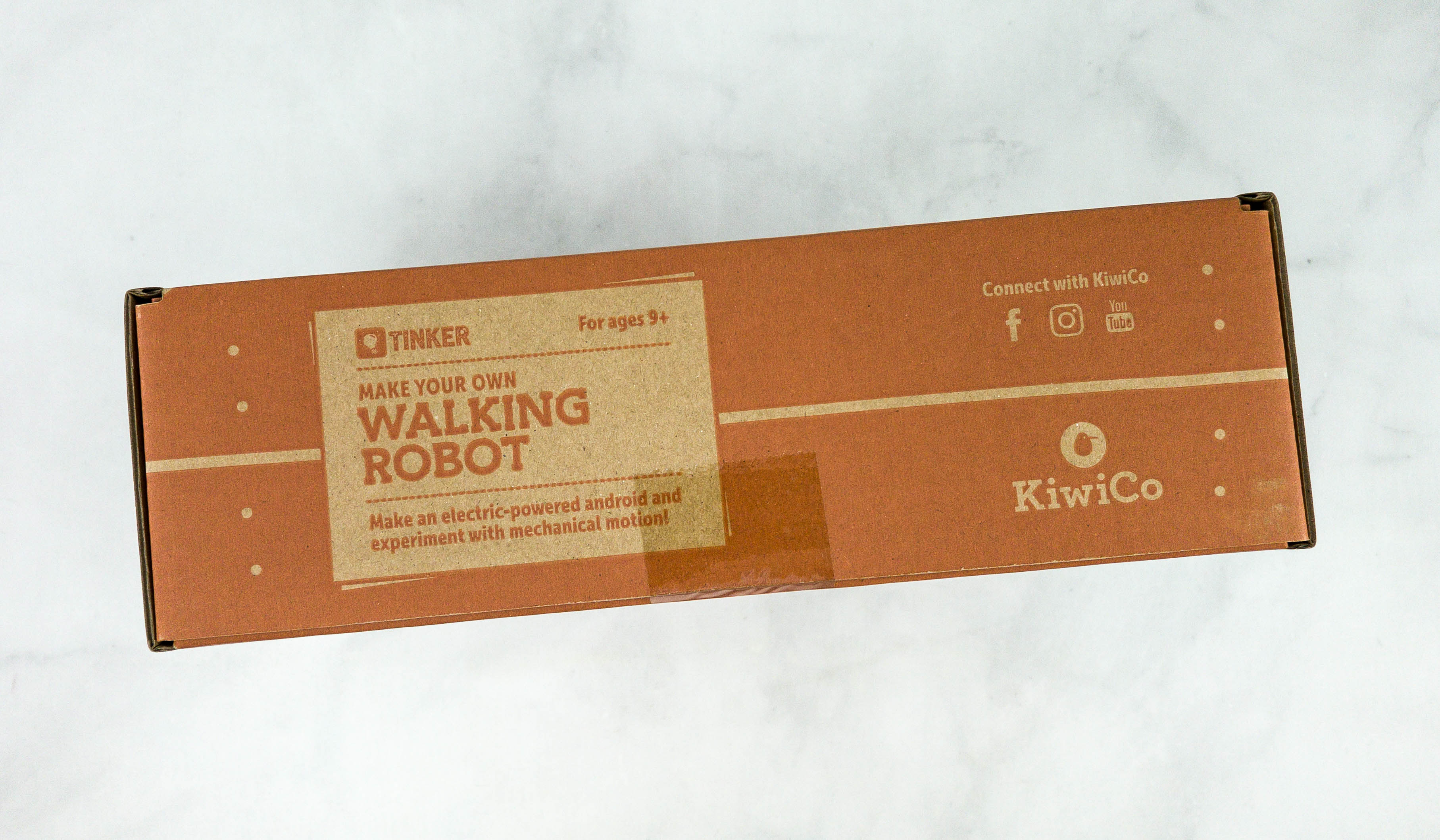
This month, we are building our own WALKING ROBOT!
Make an electric-powdered android and experiments with mechanical motion!
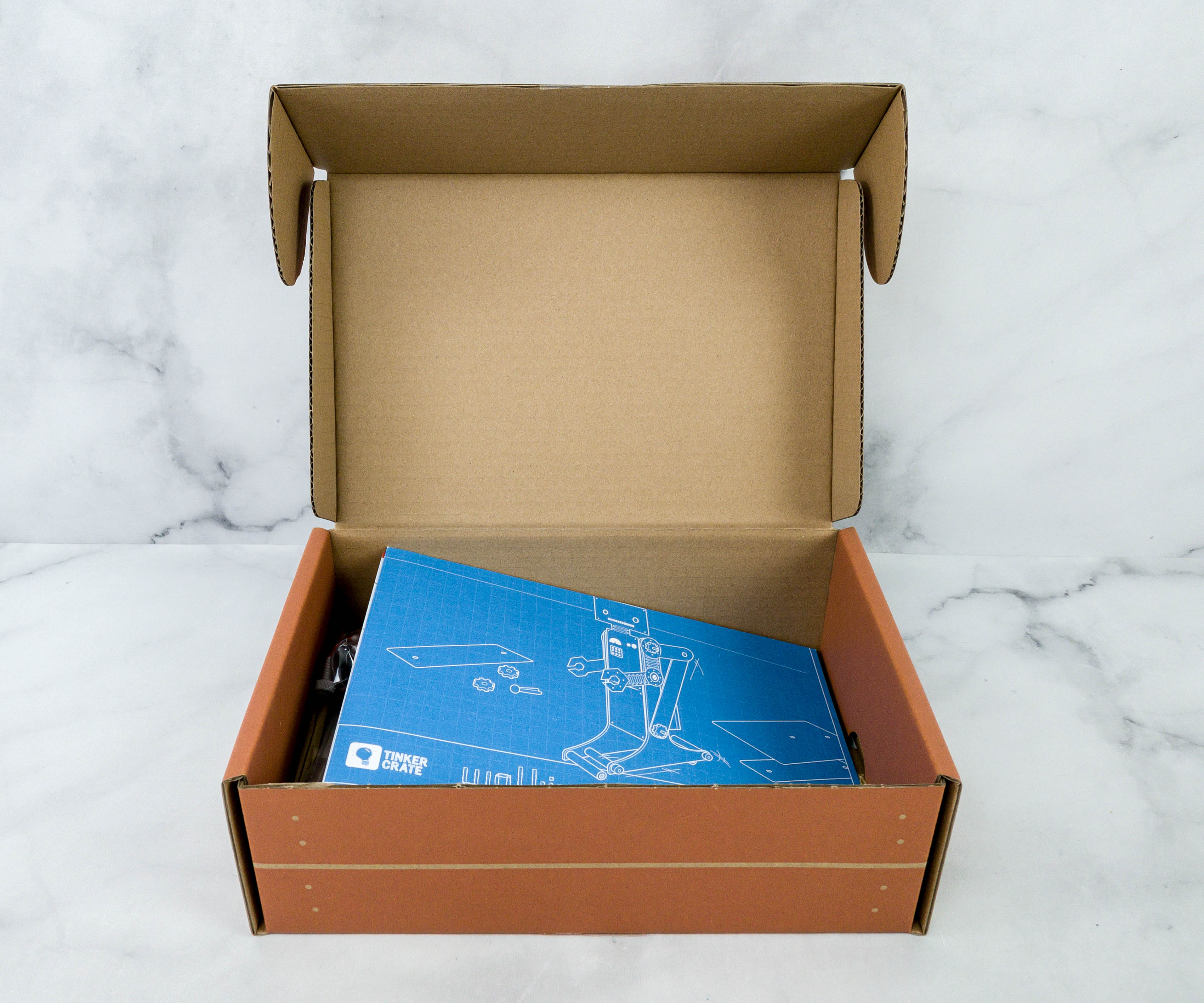
All the items are neatly packed inside.

Everything arrives together in a single Tinker Crate – the supplies, a fold-out instruction sheet, and the Tinker Zine.
Tinker Zine
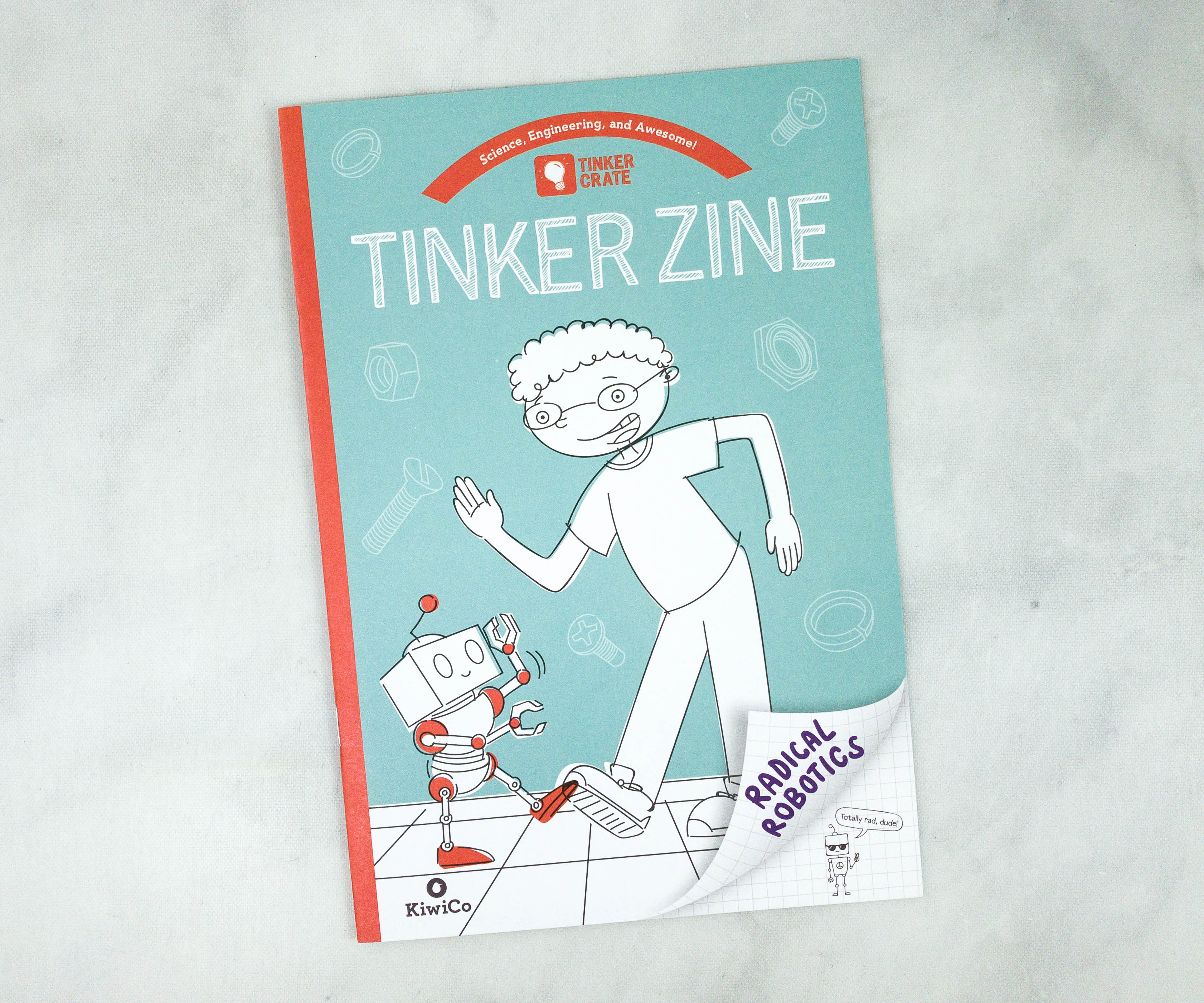
The main project is always a great hands-on activity and a great demonstration of the scientific principles featured in the box, but the Tinker Zine is full of well-written, historically, and scientifically accurate background and explanatory materials. This is where the lessons really take shape!
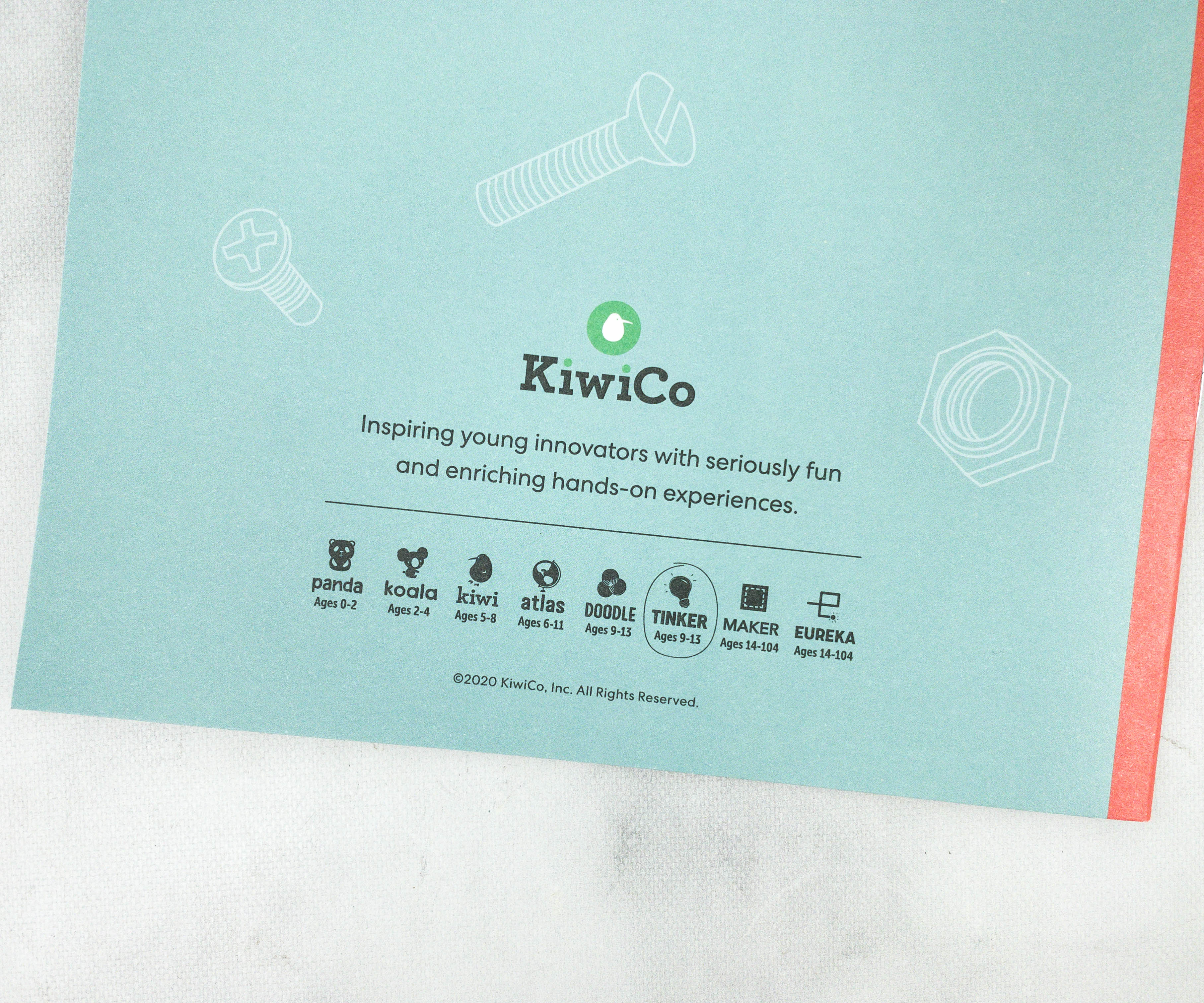
KiwiCo
Inspiring young innovators with seriously fun and enriching hands-on experiences.
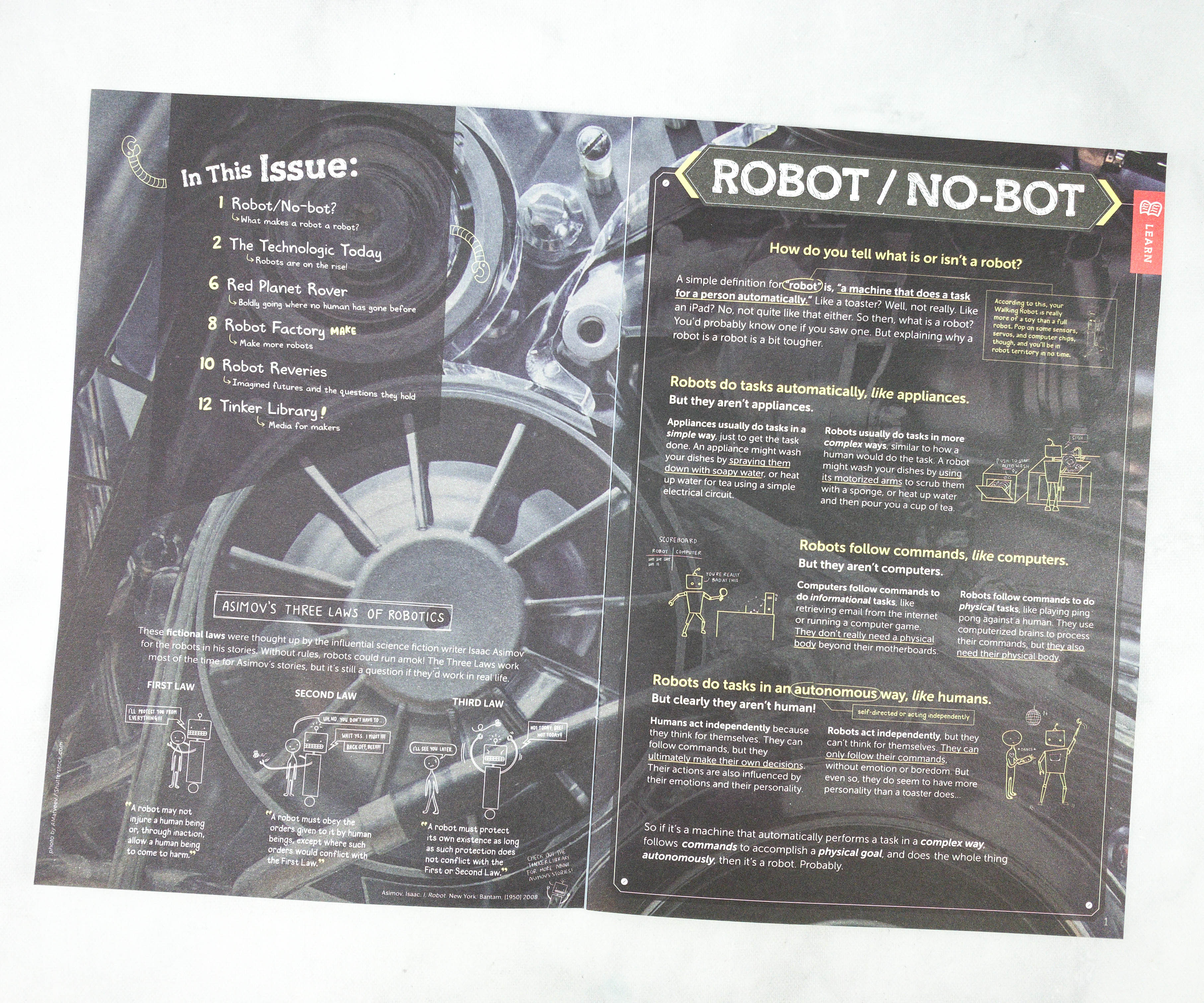
This month’s Tinker Zine discusses different pointers that make a robot a robot, and many more!
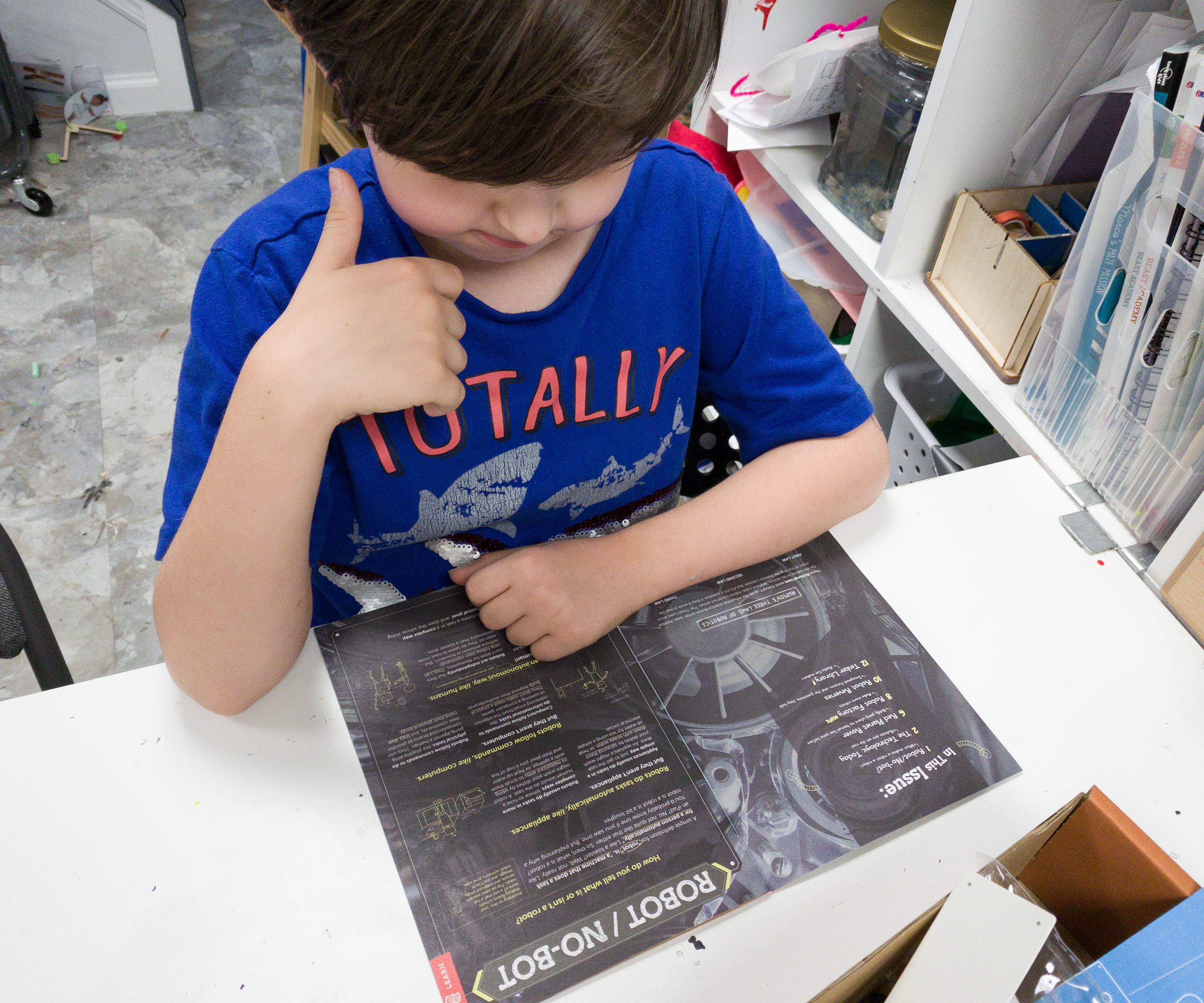
My son loves robots so much. He finds this theme very interesting, and he was excited to start the project and create his own robot!

The Tinker Zine is a superb resource for clearly articulated explanations of its mechanical and electronic concepts. They always incorporate diagrams and several real-life examples to illustrate the lessons.
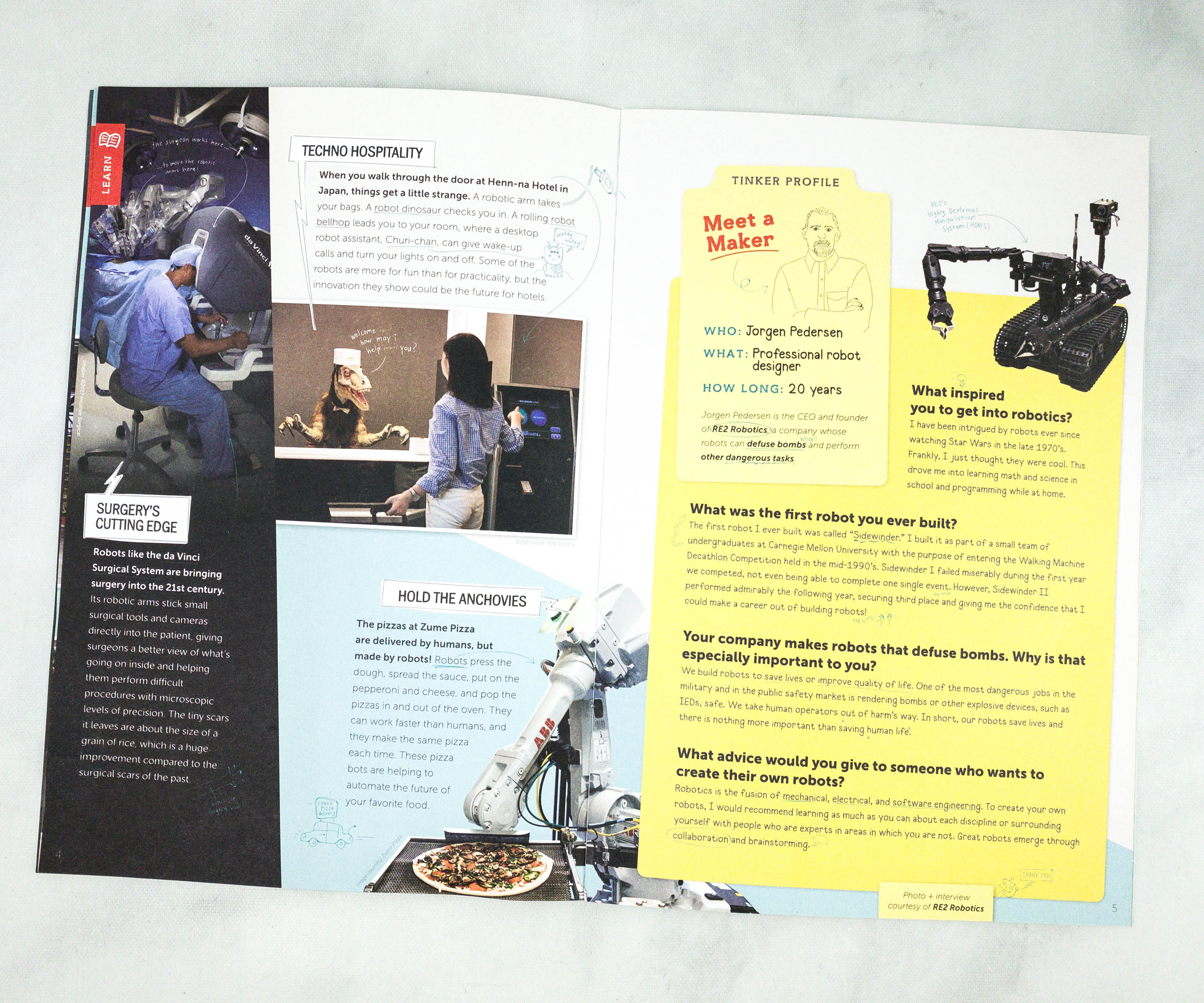
This part of the booklet features Jorgen Pedersen, a professional robot designer and the CEO and founder of RE2 Robotics. Their robots are designed to defuse bombs and perform other dangerous tasks.
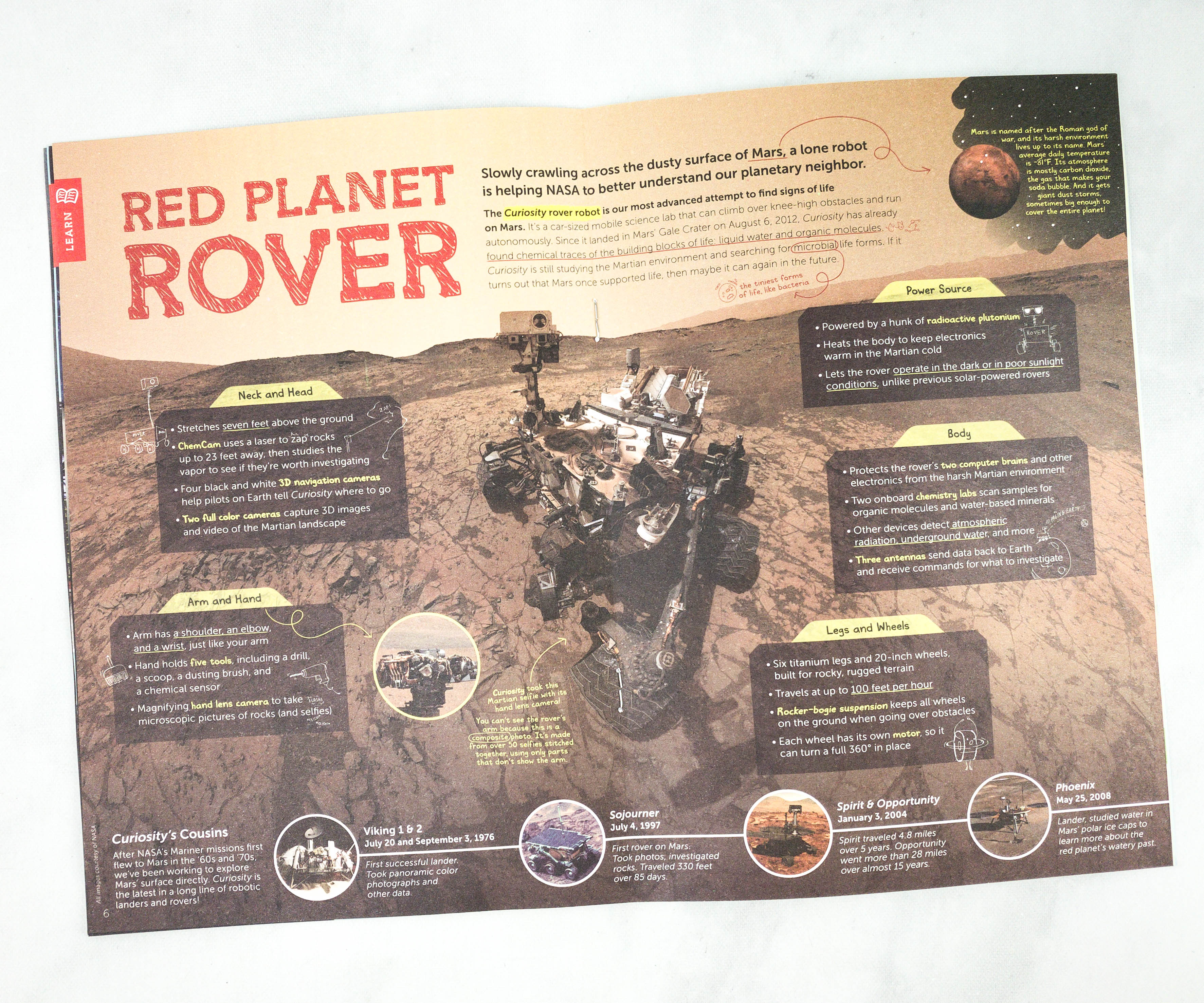
This article features the Red Planet Rover, also known as the Curiosity Rover! It’s a uniquely designed robot that was created to provide a more detailed exploration of Mars. They even included information about the explorations made to Mars from 1976 to 2008.
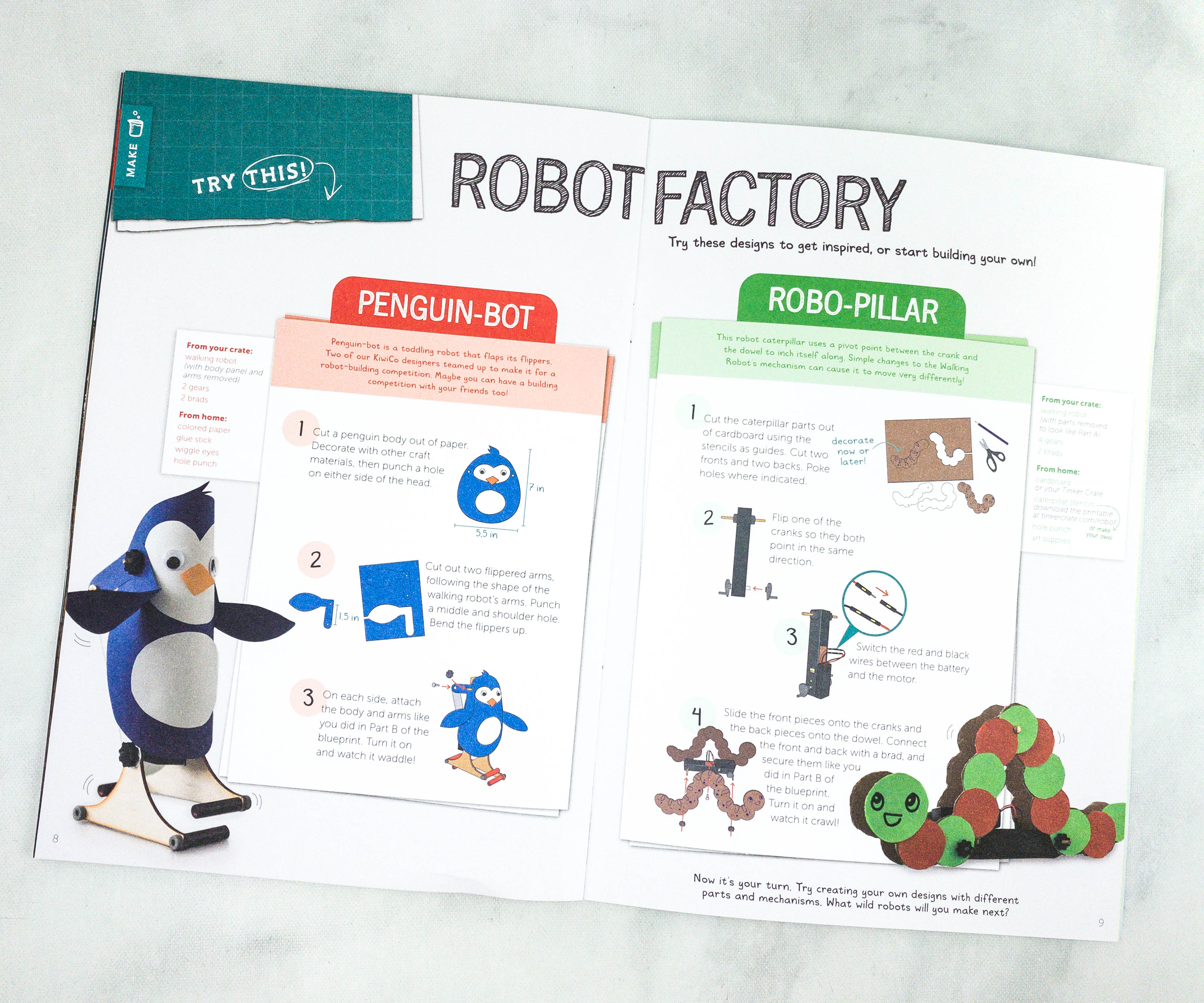
This page features an activity suggestion, and it’s all about building our own robots. They even provided us with a detailed procedure on how to make Penguin-Bot and Robo-Pillar!
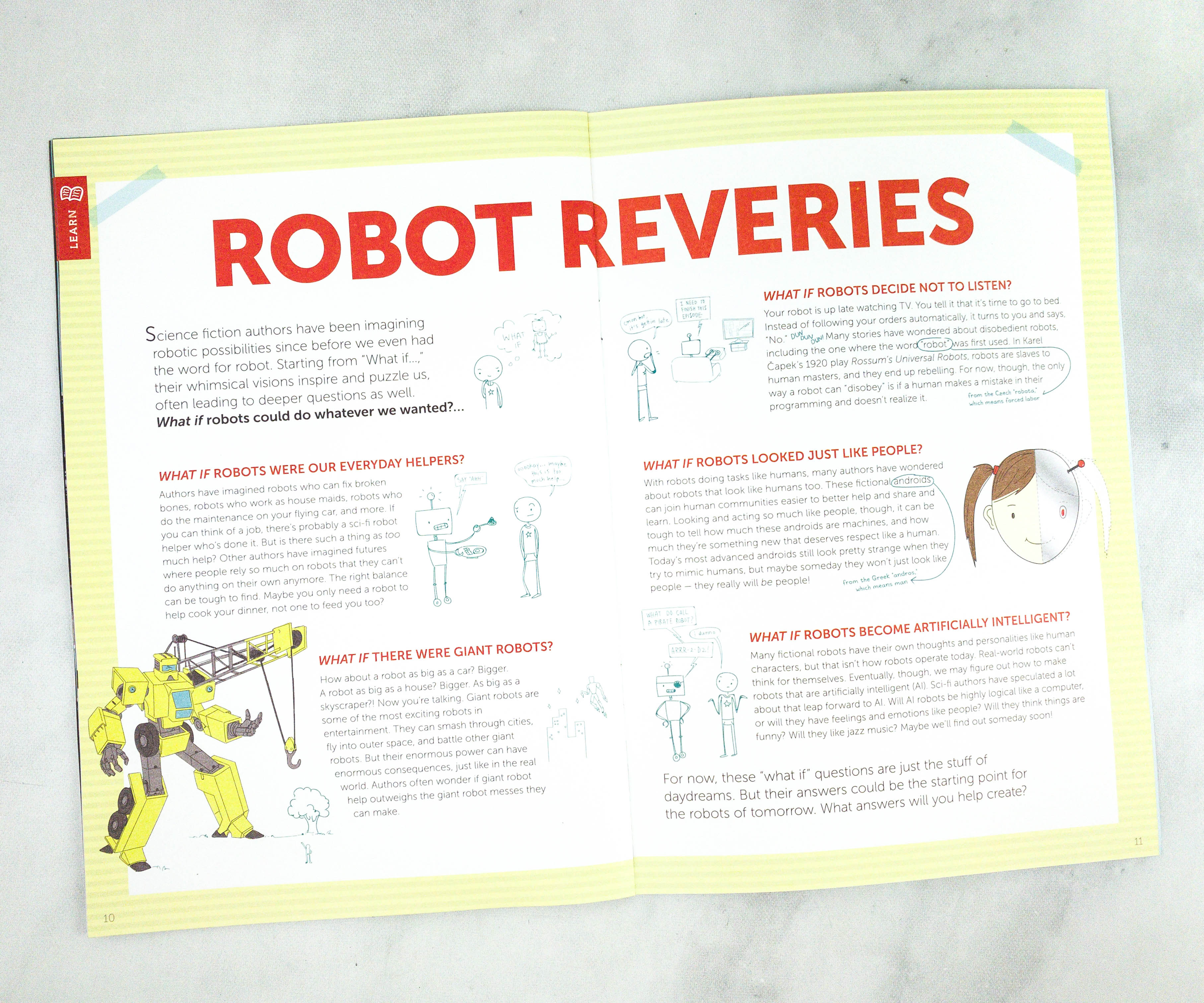
Here are some “what if” questions by science fiction authors that make us think of the possibilities of co-existing with robots!
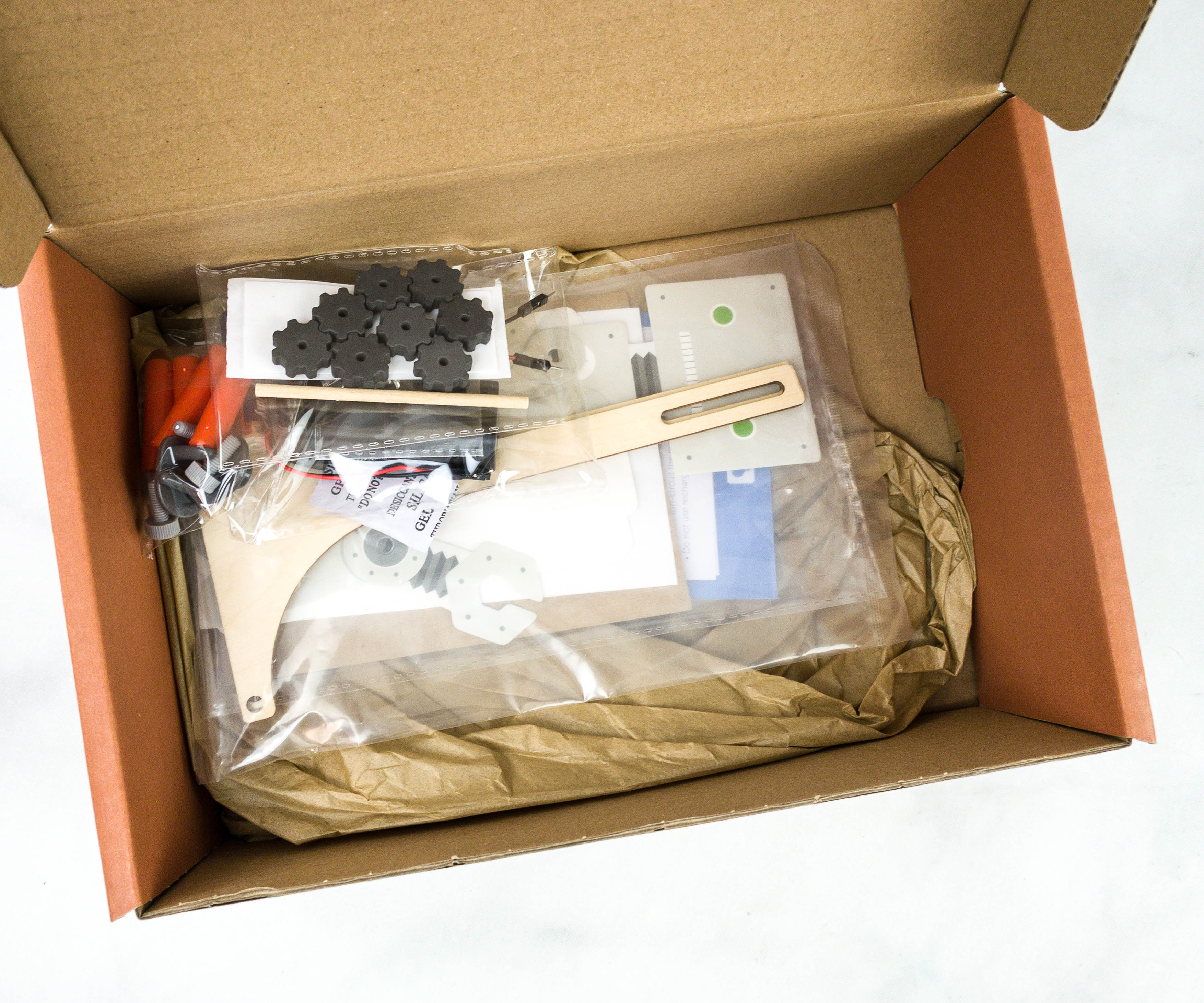
Some of the materials for the project were packed in plastic.
Tinker Crate Blueprint + Materials
The instructions and other essential project information are printed on a faux blueprint fold-out sheet.
Featured on this side of the sheet is an inventory of all the supplies provided included inside the crate.
If in any case the robot doesn’t work or move as expected, the booklet provided us with some troubleshooting tips to get it running.
They also encourage us to customize our robot using items from home!
Tinker Crate Activities
This crate provides most of the things we need to complete the project. For this project, they sent the body piece, body panel, paper arms, paper links, leg pieces, brads, bolts, gears, rods, motor, battery pack, and battery.
The faux blueprint has illustrations of all the materials needed for each portion of the assembly. For more complex builds, this is really handy for getting out just what you need for the current step.
The first part of the project is called building the body!
For this part, we used the body piece, sticky foam, motor, clear stickers, dowel, gears, cranks, battery, and battery pack.
My son punched out holes on the carton body piece, then placed the motor onto the body and ran the wires through the large rectangular hole.
The second stage of the project is linking the limbs. We used the robot body from the first part, leg pieces, rods, body panel, bolts, paper links, paper arms, gears, and brads.
According to this part of the sheet, we should keep the brad loose enough to let the paper arms move smoothly.
Once the legs and arms are built, the next step is to slide it onto the body and secure the parts using the gears.
This robot is designed to walk forward, but we can also switch the gear and let it walk in reverse!
There’s also a part on this sheet where we are asked to stop, check, and test if we are doing things properly. They also provided us with tips to solve potential problems.
Featured on the back part of the booklet is a battery use instruction, so you can operate the Walking Robot effectively.
The battery pack is located on the bottom back part of the robot. Simply put the battery on the pack, put the cover back on, and turn it on.
Now, all we have to do is to turn on the battery pack and watch the robot walk! My son loves it so much!
Tinker Crate Extensions

The Zine also provided more ways to tinker via the Tinker Library, where they suggest related literature for this month’s topic: Fuzzy by Tom Angleberger and I, Robot by Isaac Asimov.
Tinker Crate is a fun way of introducing kids to various STEM concepts! This month’s robot project features a perfect balance of learning, building, and playing. My kids love robots and they were so happy about how our final output turned out! Since the crate provides everything we need to complete the activity, we were able to start right away. The booklet is also a great help, as it’s well-detailed and informative. This is definitely one of the best subscriptions to try for STEM education at home!
Have you tried Tinker Crate yet with your kids?
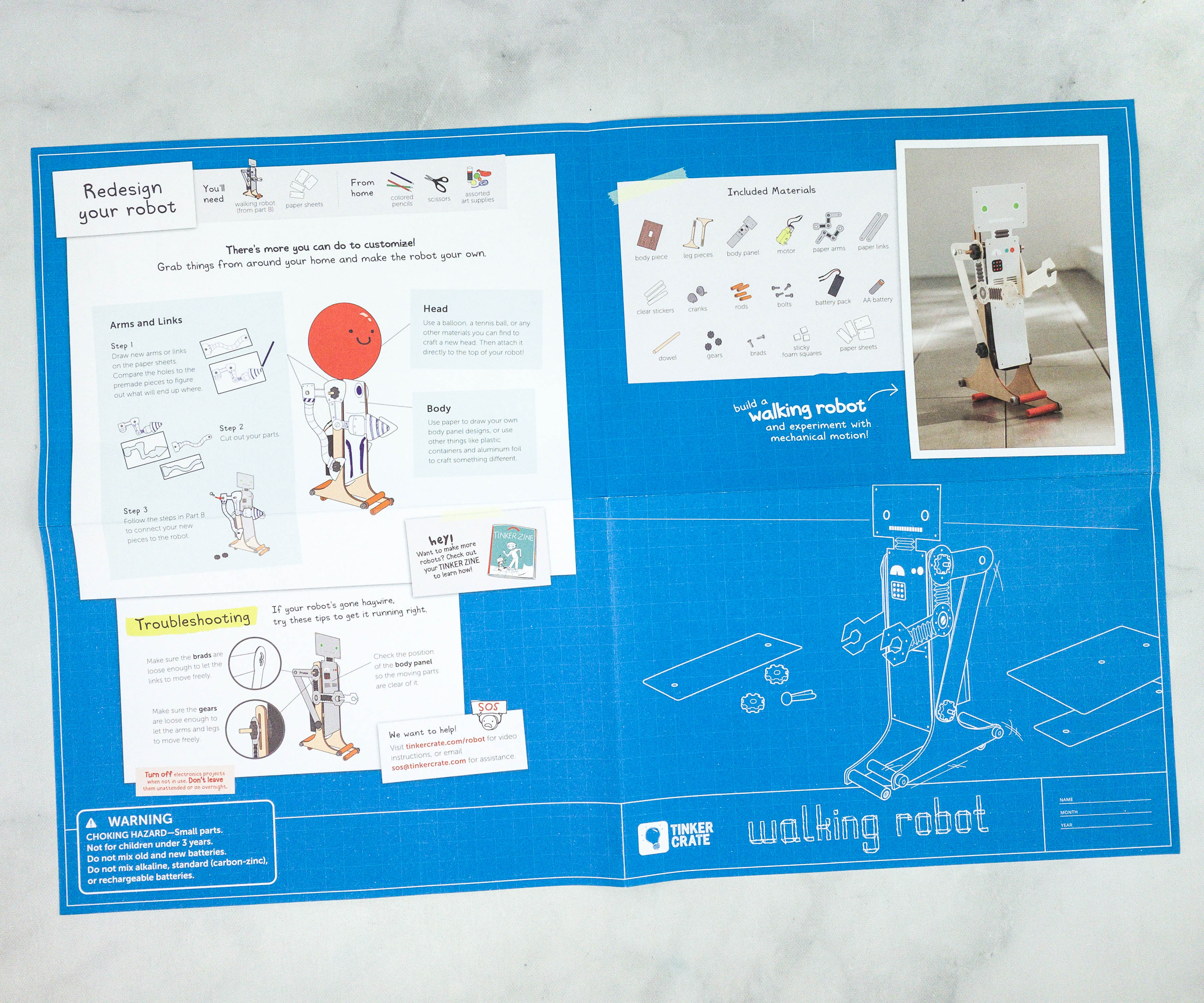
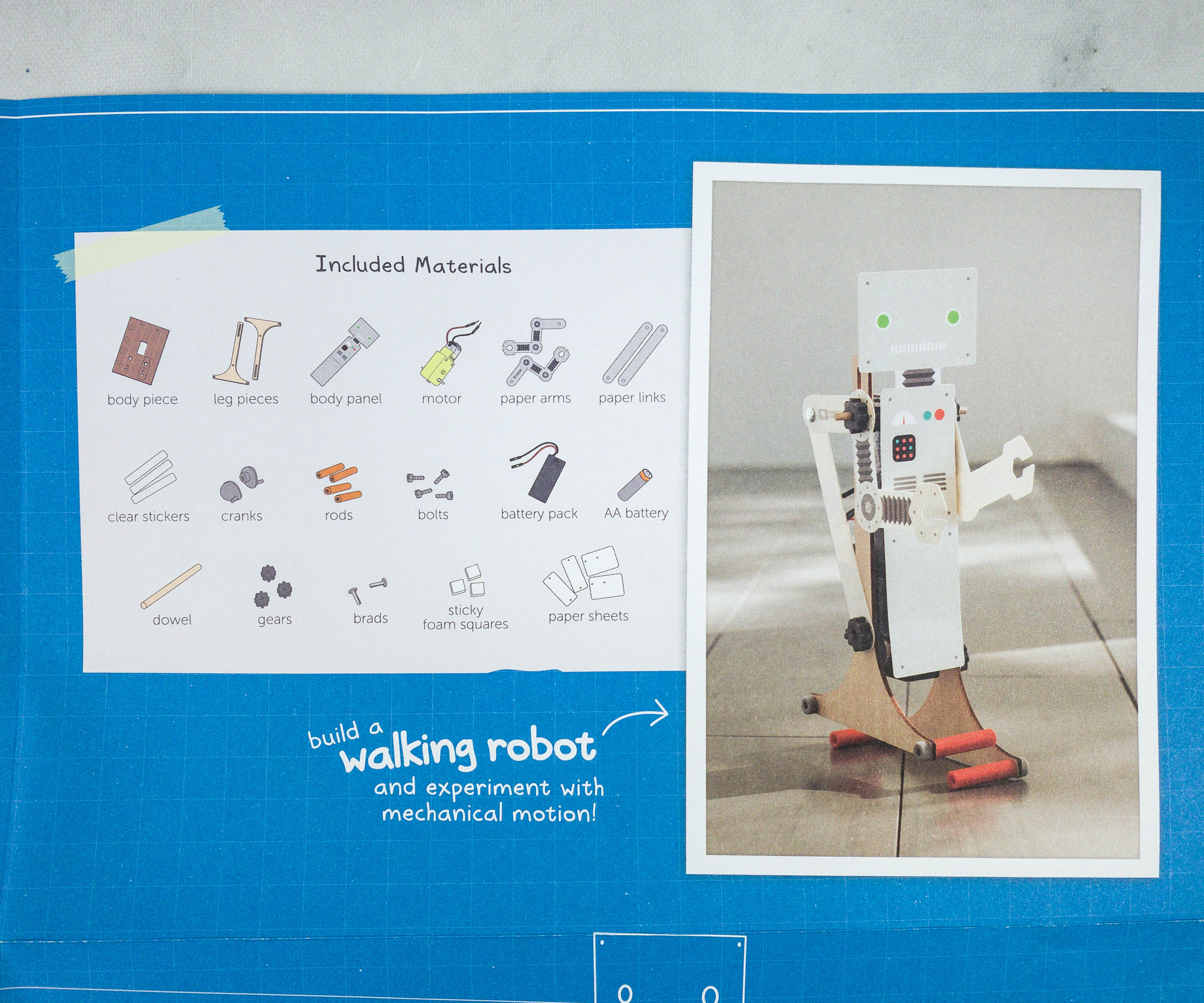
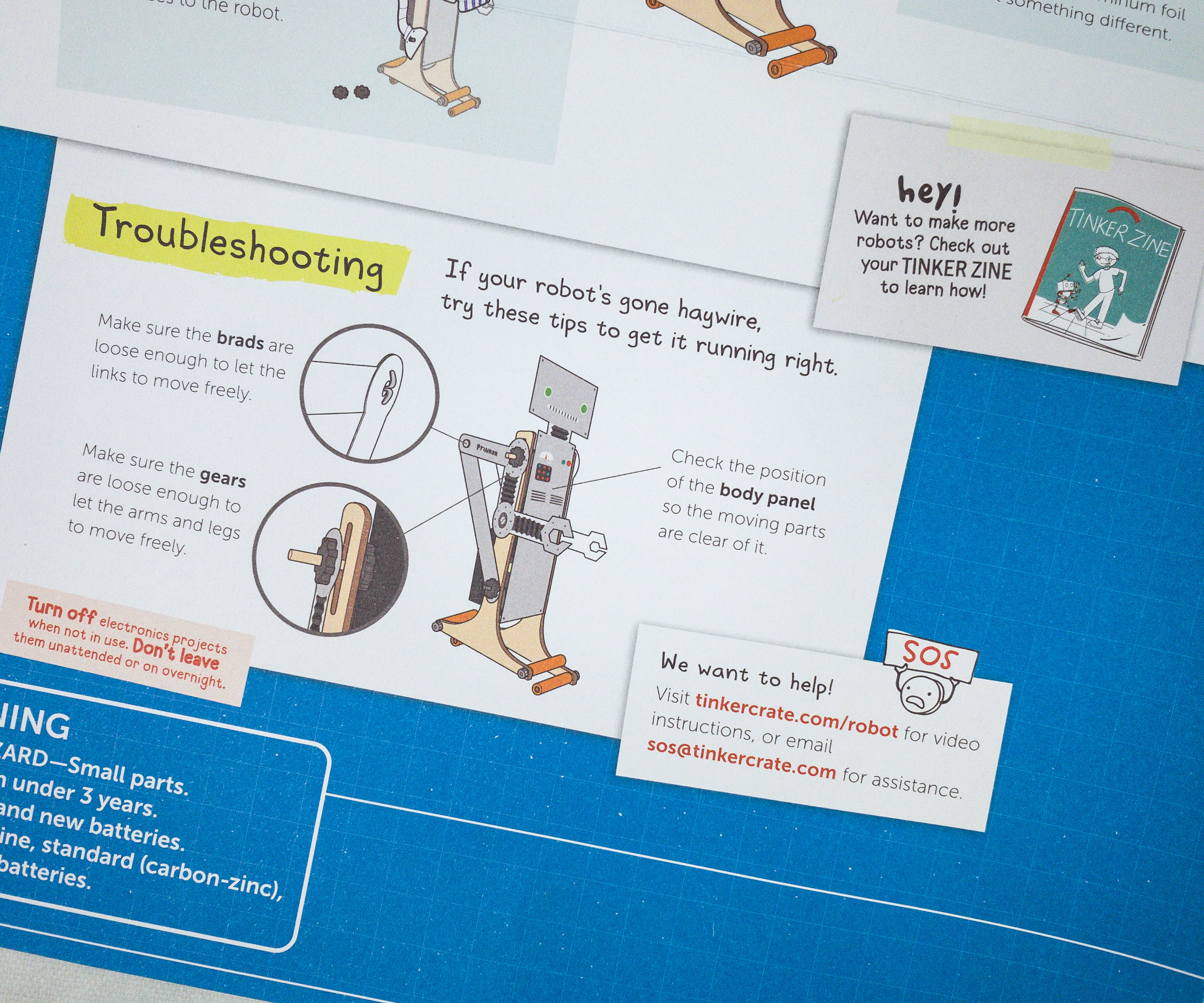
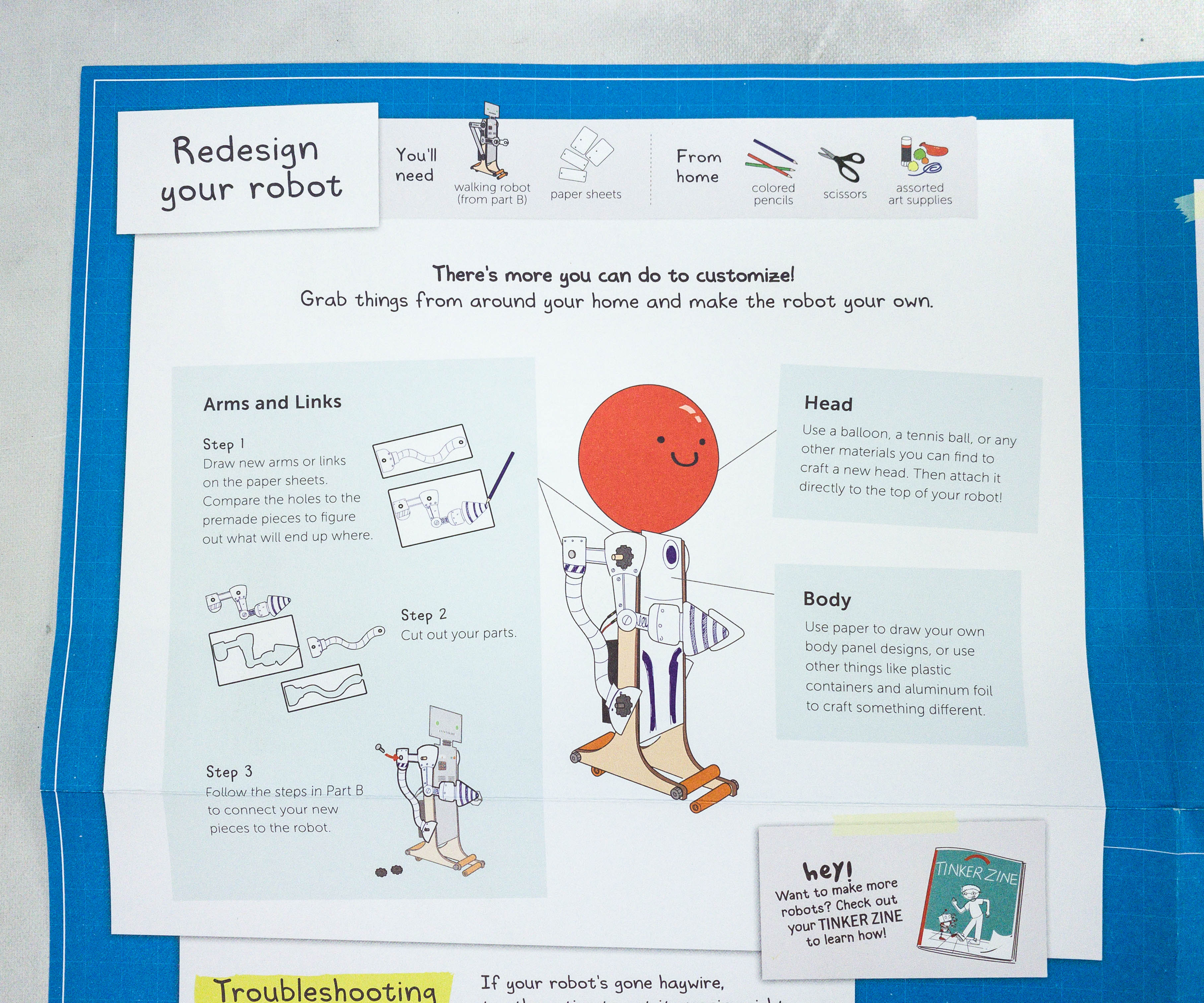

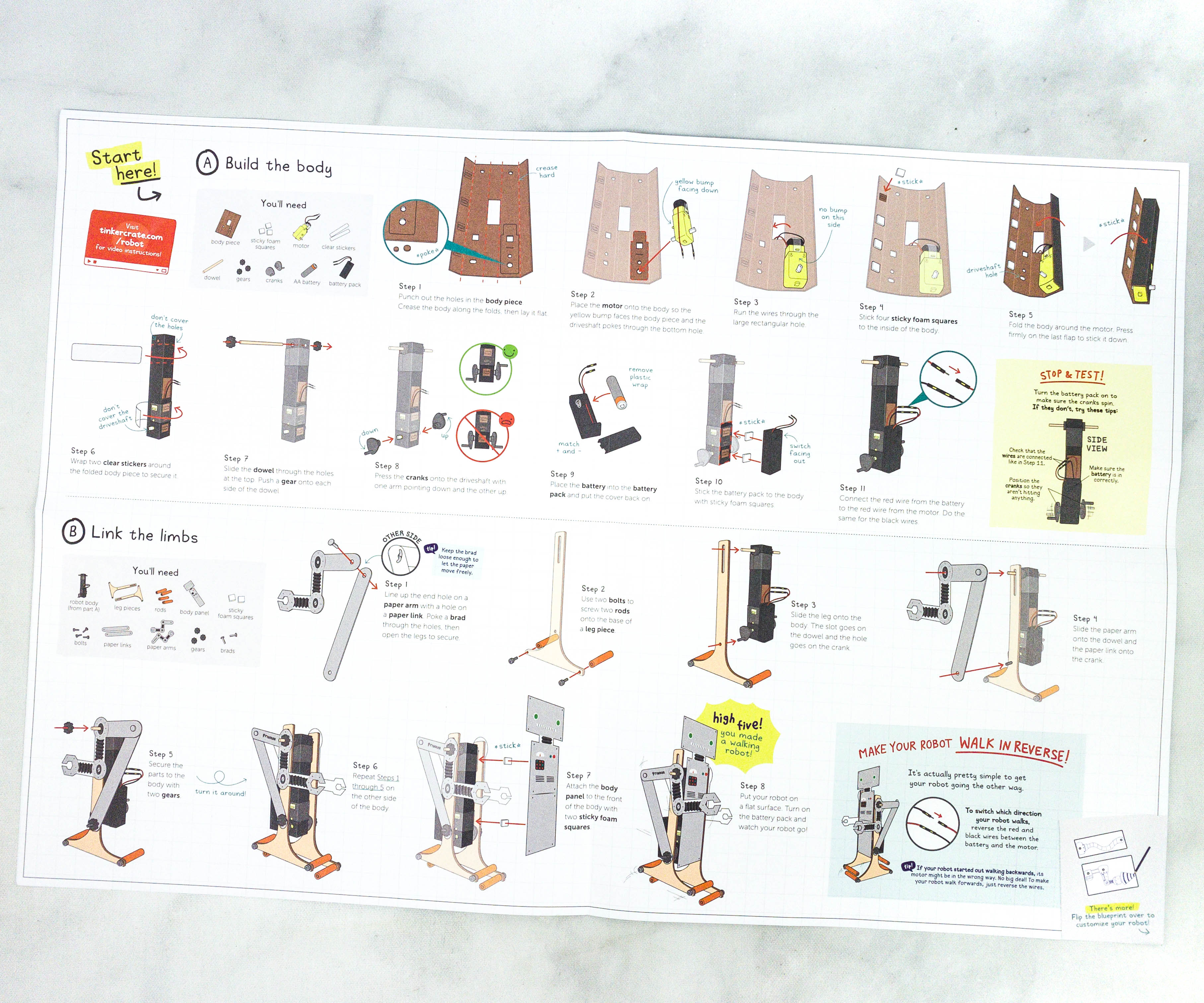

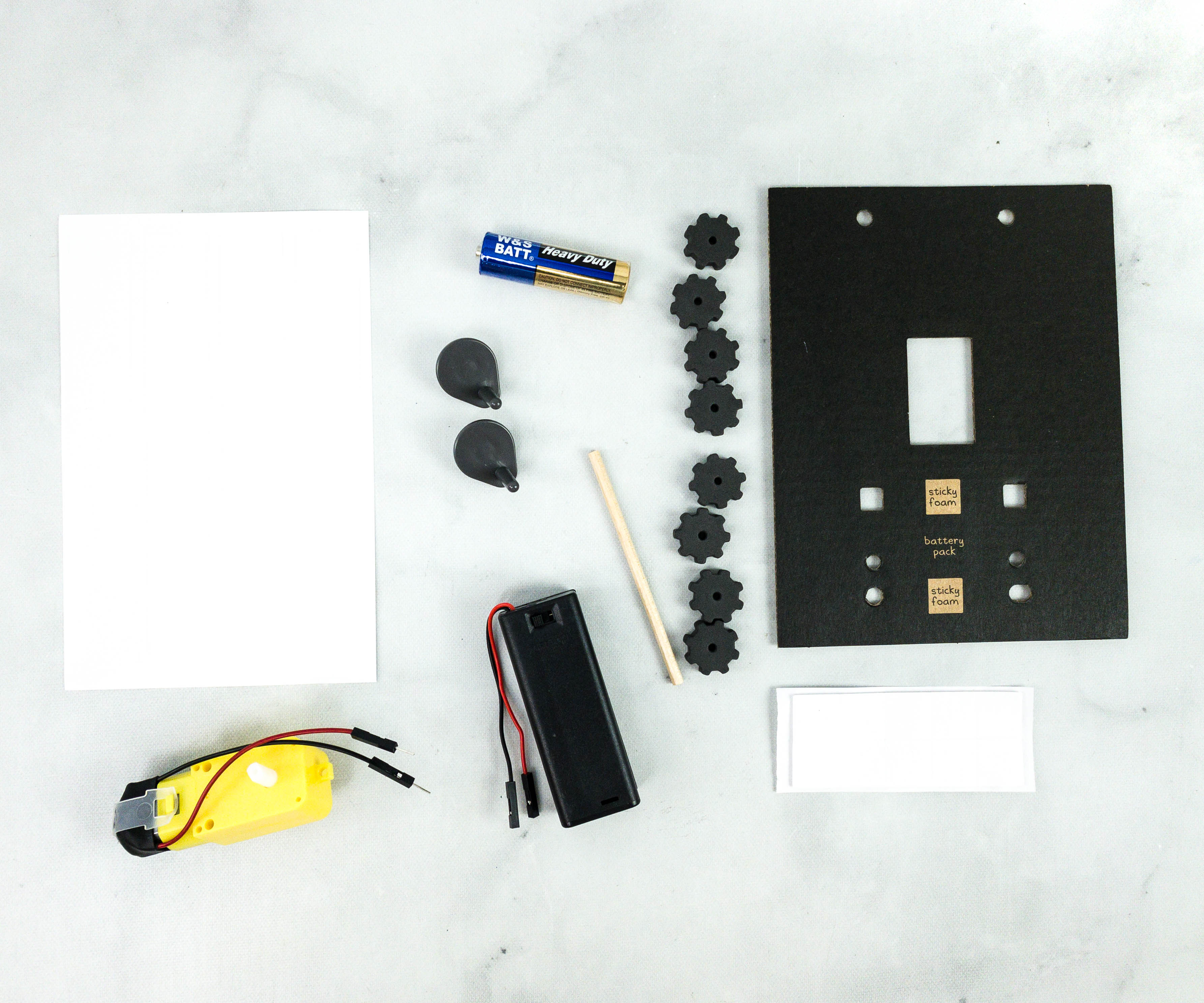
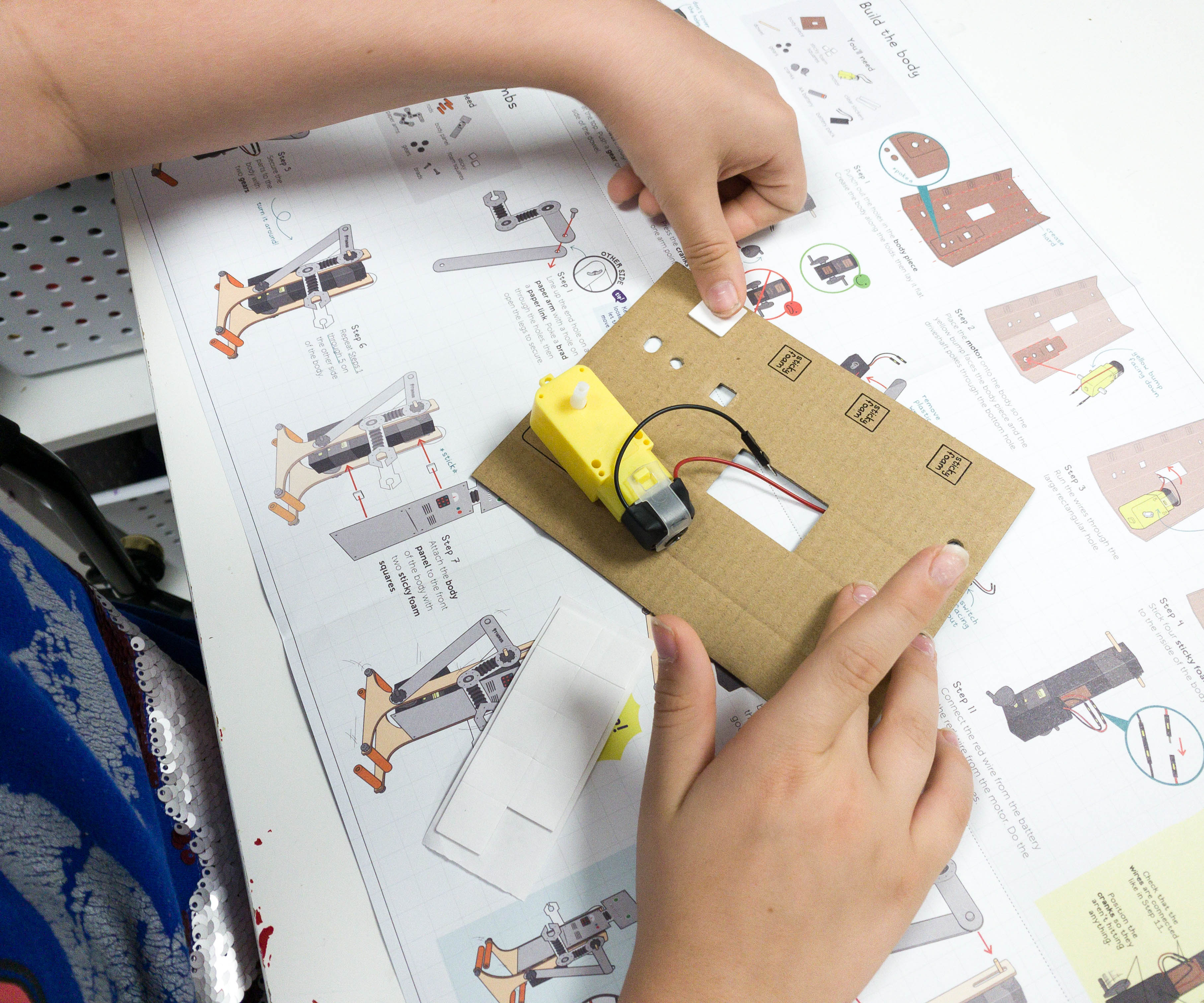
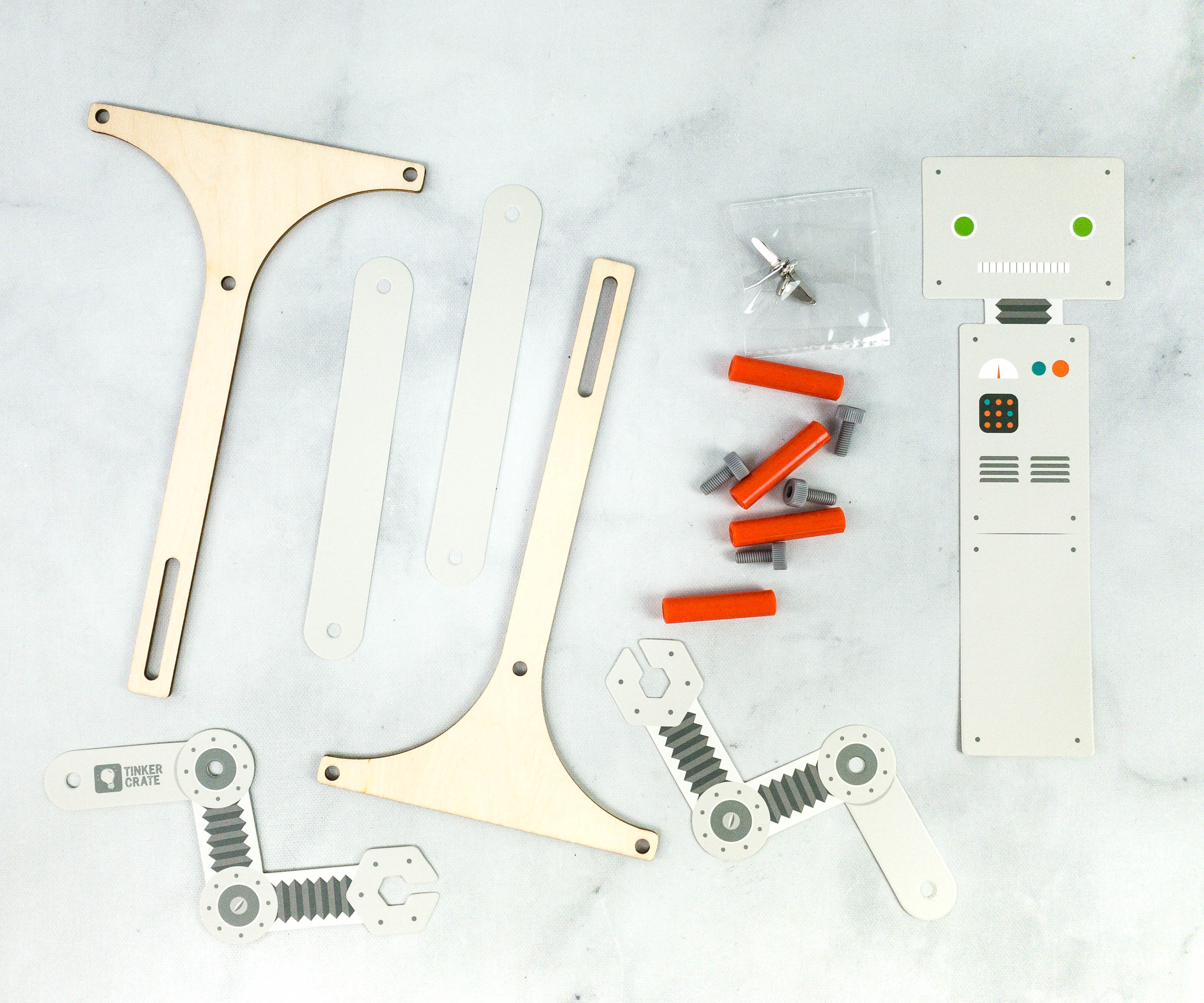
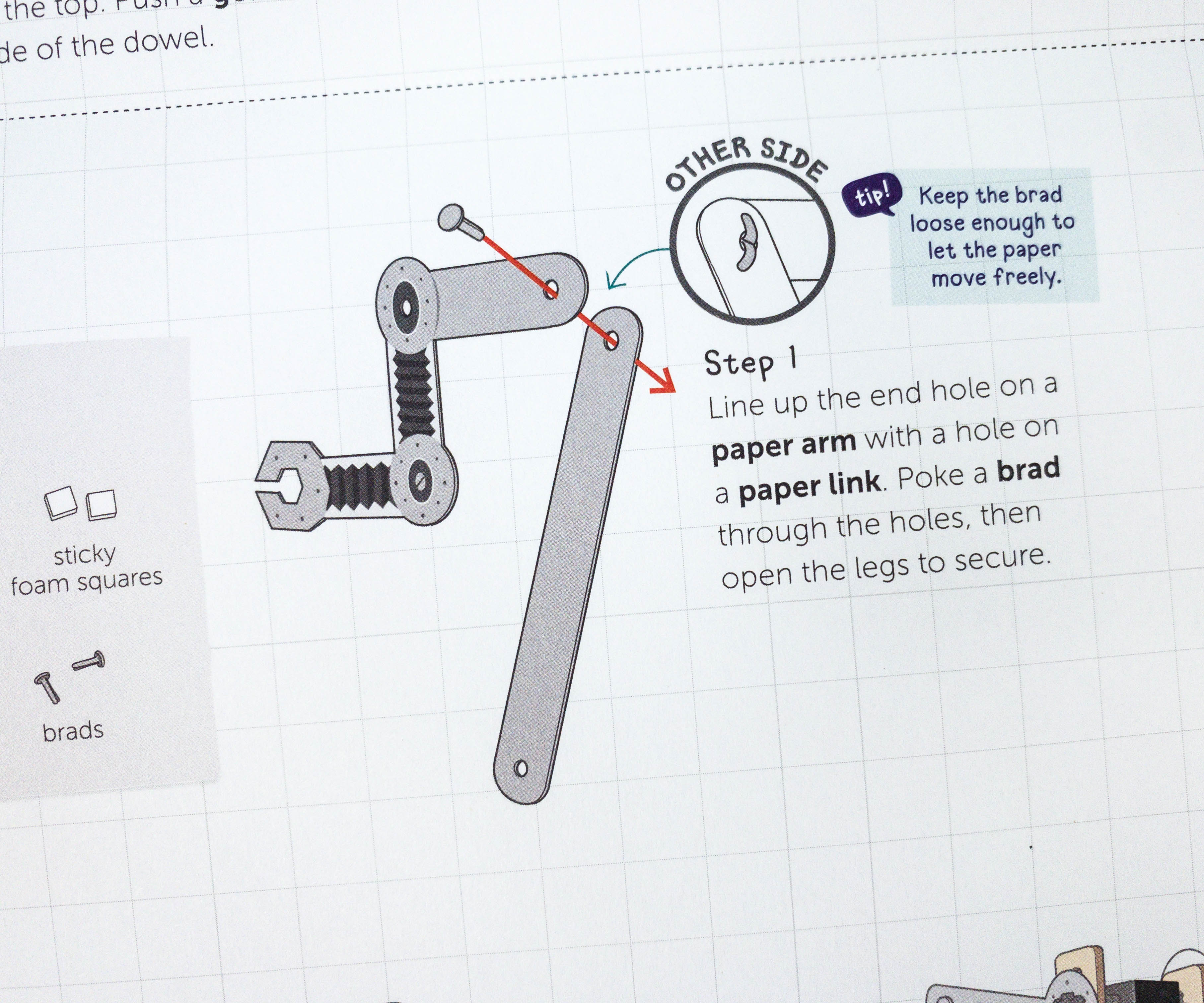

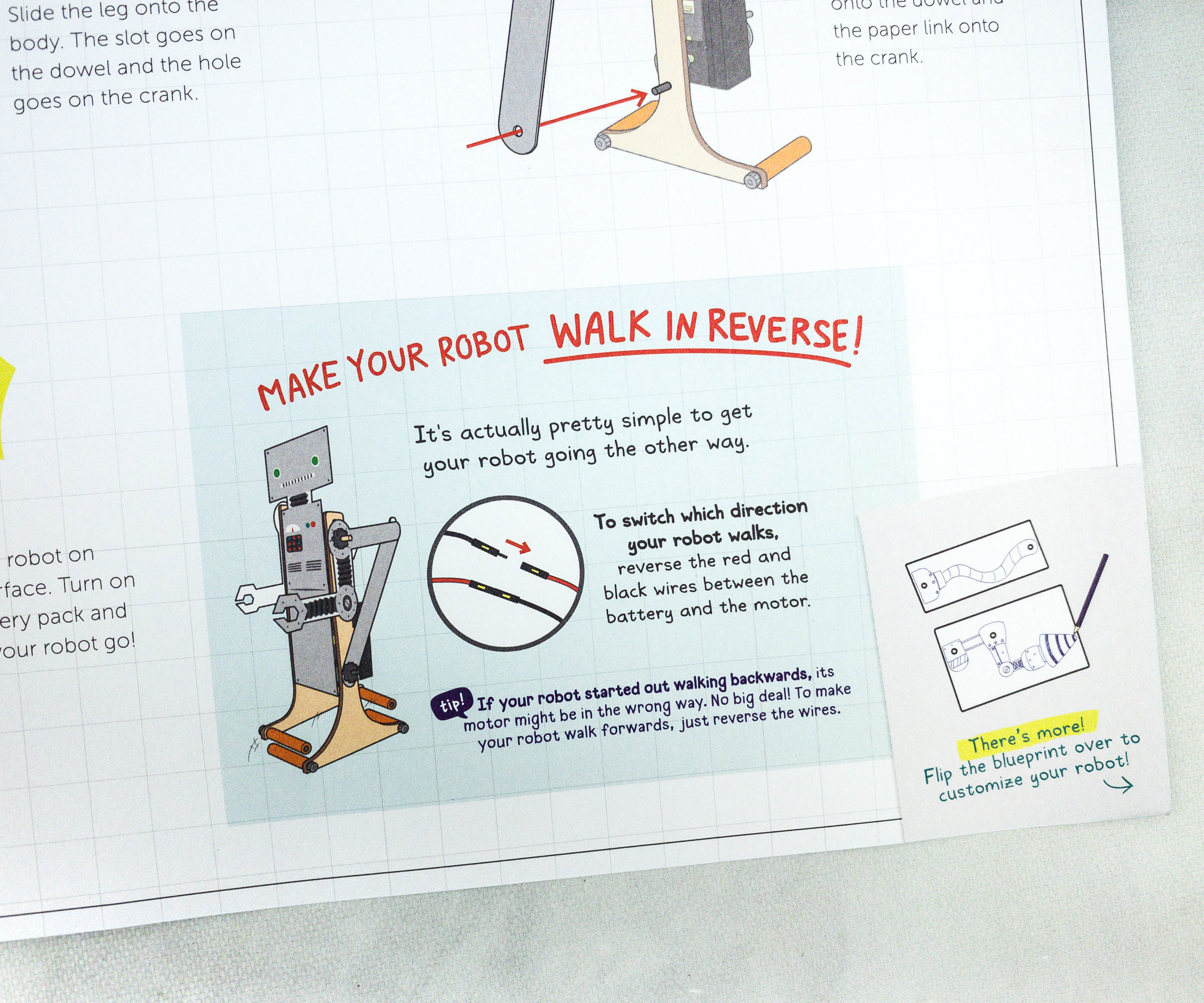
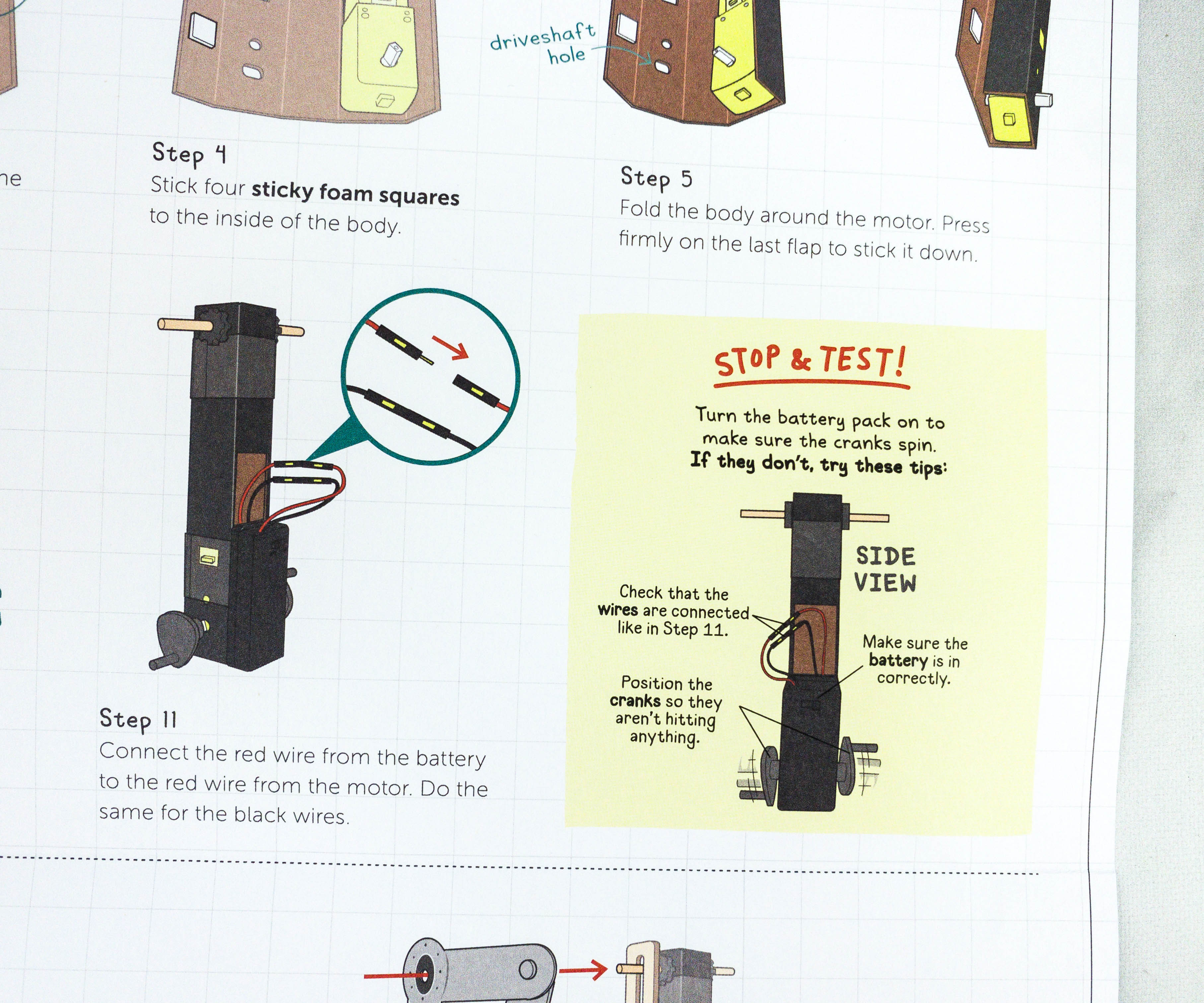
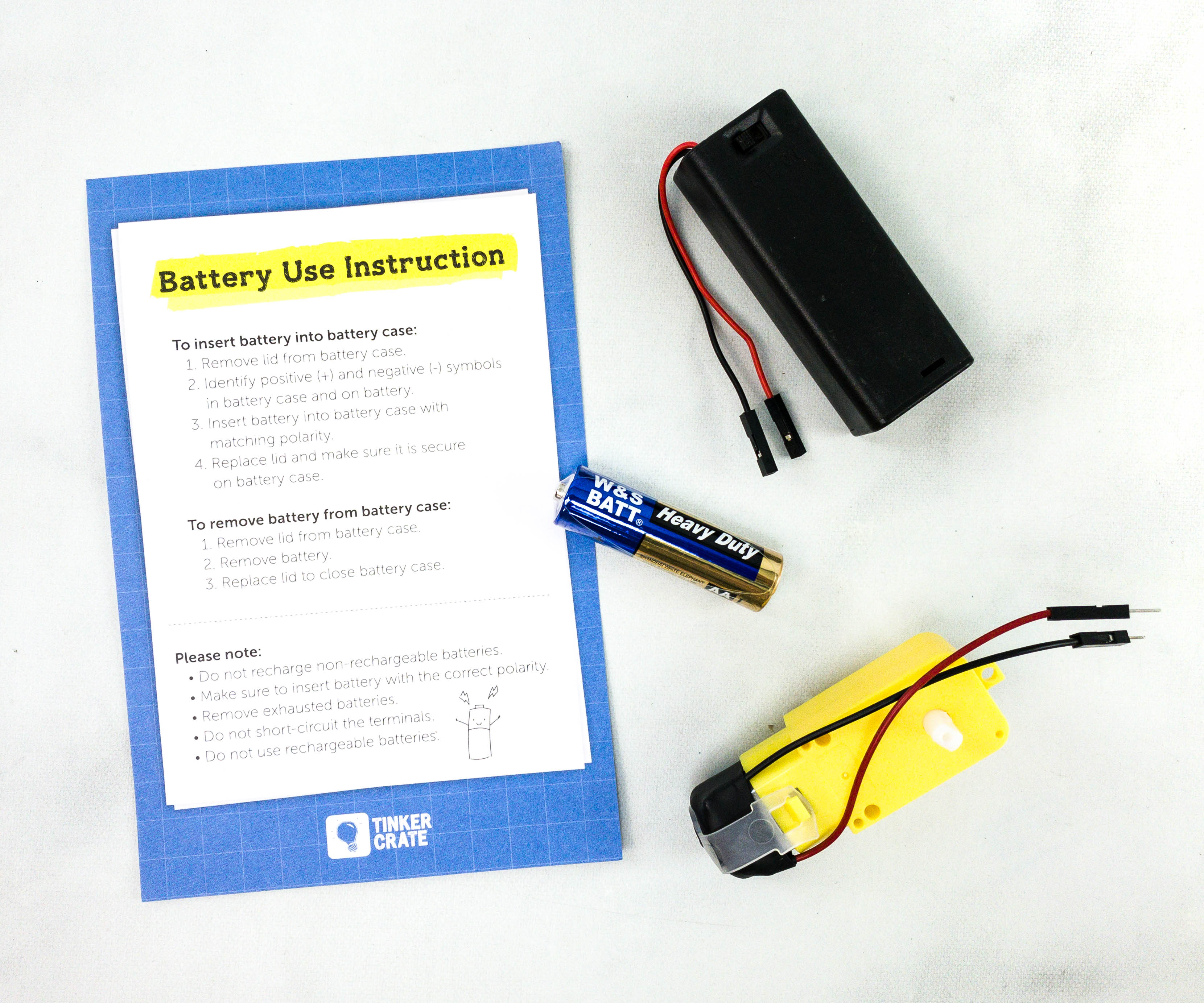
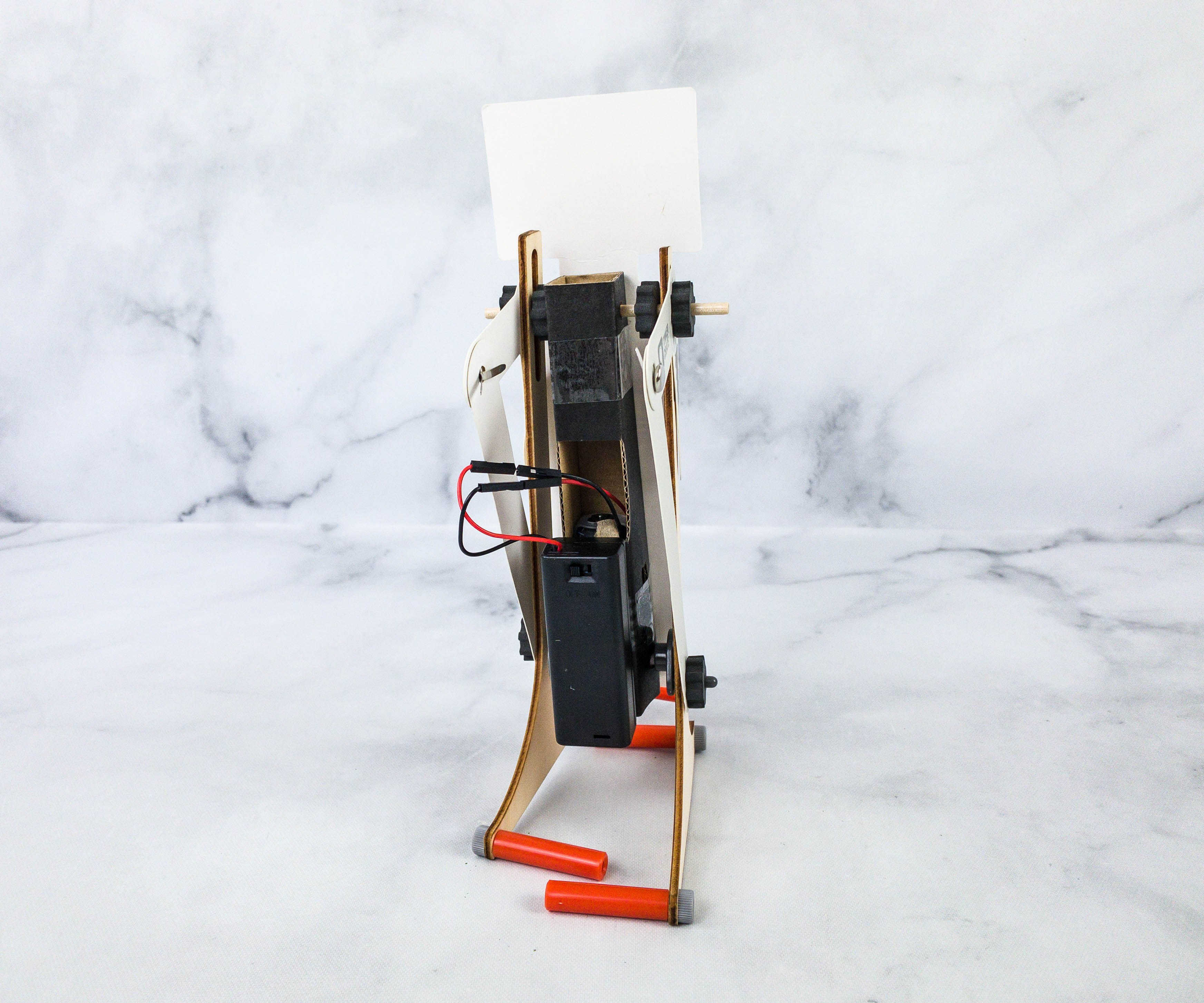
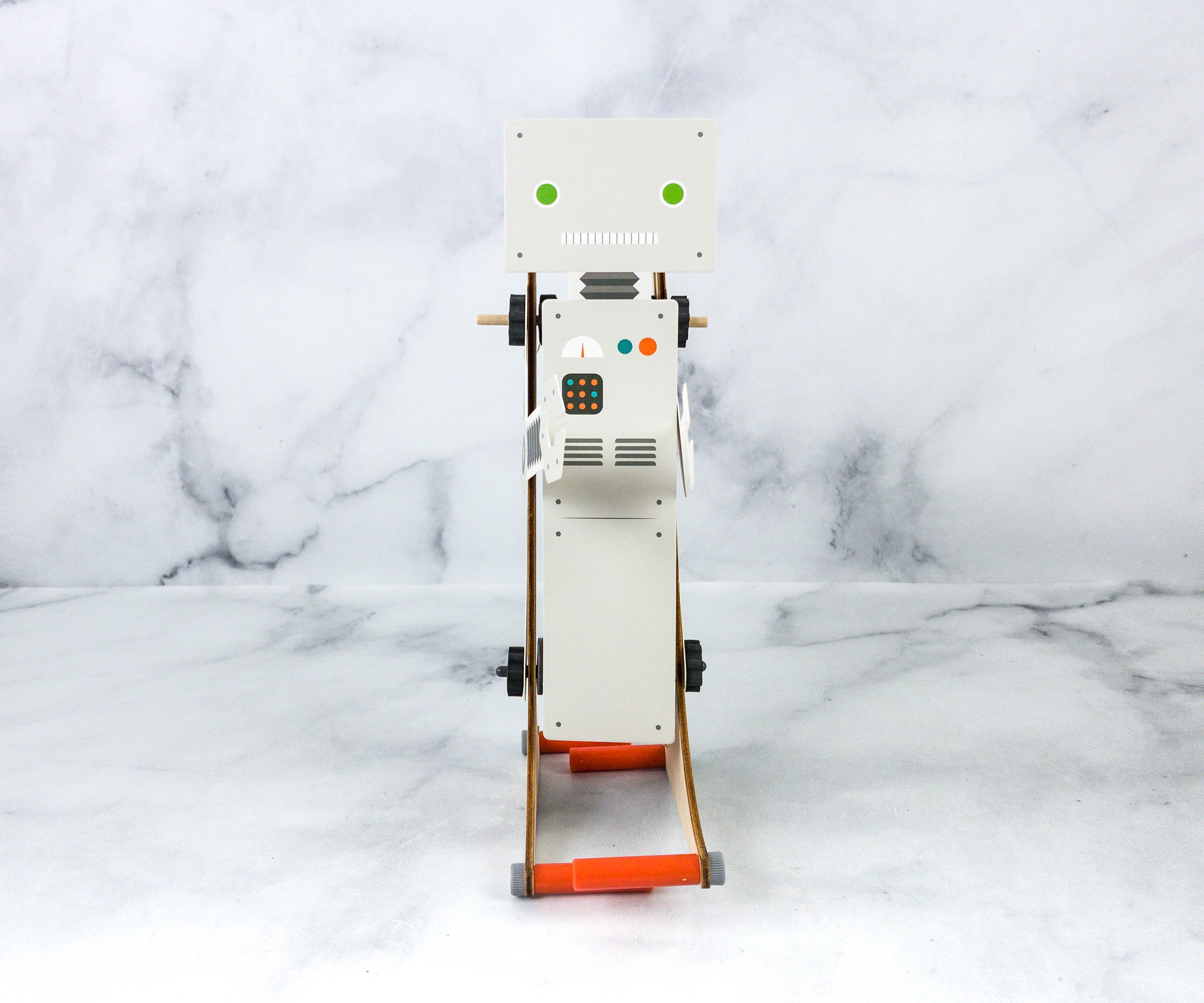





Comments